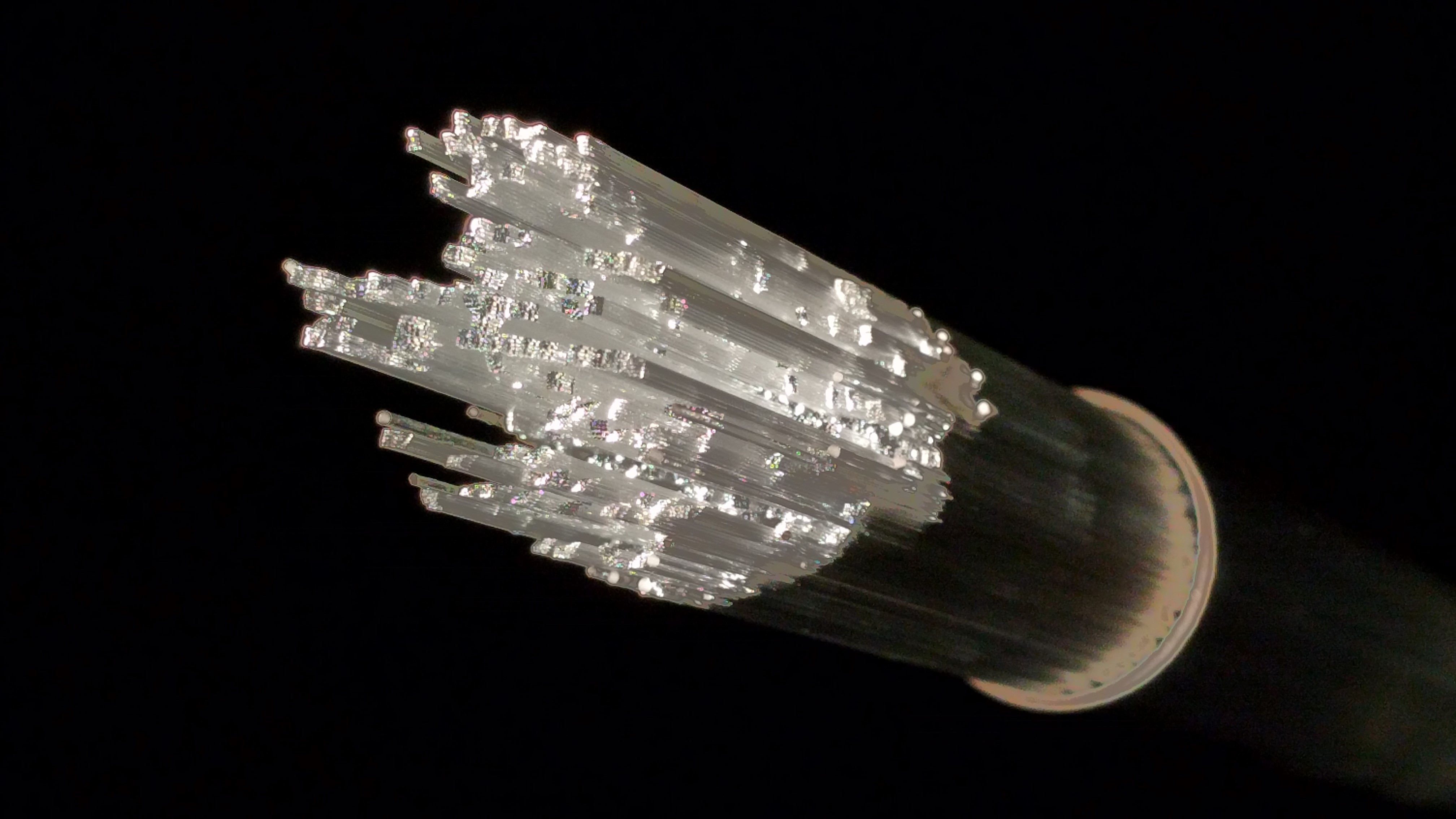Whether it's encoding and decoding information, tackling logistical puzzles, or helping simulate new pharmaceutical drugs, quantum computers could help solve global problems that currently evade us.
Conventional computers store information as a binary digit (a bit) – either a one or a zero. In quantum computing, individual quantum bits (qubits) can be simultaneously a one and a zero. This offers more computational space and speeds up calculations.
Harnessing quantum mechanics
Many quantum technologies exploit entanglement - a uniquely quantum property. This is a phenomenon where two particles can be separated by large distances, but whose properties remain linked.
In this case, the particles are individual light particles called photons. Researchers can create pairs of 'entangled' photons that share properties, such as wavelength or colour. Before measuring the photons, they may know that one will be red and the other blue - but not know which is which. Each photon could be either colour, with a 50% probability. When they measure one photon and discover it's red, they then know with certainty the other one is blue. This is true no matter how far apart the light particles are from each other.
In quantum computing, different properties of a particle represent the binary, encoding information. For example, a red photon could represent a one, and a blue represents a zero. Entangled photons can be in both binary states at the same time, and many photons can become entangled together at once. This opens an enormous computational space.
Manipulating light
Using the Fibre Fabrication Facility, Dr Peter Mosley and his research team have created specialised fibre to produce single photons. Unlike the fibres used in healthcare, these have a solid glass core. Air pockets surround this core, trapping the light inside. As the team send high-powered laser pulses down the fibre, individual photons get annihilated. They then transfer their energy into two new, linked photos of different wavelengths and colours. Not only do the air pockets trap the light in the core, but their pattern controls the wavelengths, or colours, of the resulting photons.
As well as making single photon sources and creating photon pairs, the team have been tackling another quantum problem. They’ve joined forces with the University of Oxford and other partners in a quantum technology hub. Together, they’re exploring how to link ‘nodes’ to form a quantum network. Like the internet, this would allow people to share information over large distances.
To send information – in this case, light – over long distances in optical fibre, it must be the right wavelength. In conventional fibres, shorter wavelengths, such as blue light and visible light, scatter easily. Longer wavelengths, such as those in the infrared, lose much less energy and can travel much further through optical fibres. This is a much more desirable wavelength for sharing information over long distances.
Within the quantum technology hub, the team at Bath are focussing on the frequency conversion of single photons. Changing the wavelengths of single, information-carrying photons can optimise them to travel further.
Taking the next steps
Quantum computers big enough to tackle these challenges don’t yet exist, and several technological hurdles must still be overcome. This means we're yet to understand their true potential.
Dr Mosley predicts the technology is still a decade away from being widely adopted and penetrating the supercomputing space. But whether it’s changing the wavelength of photons or developing quantum memory, his work at the Fibre Fabrication Facility is certainly laying the groundwork for the computers of tomorrow.



